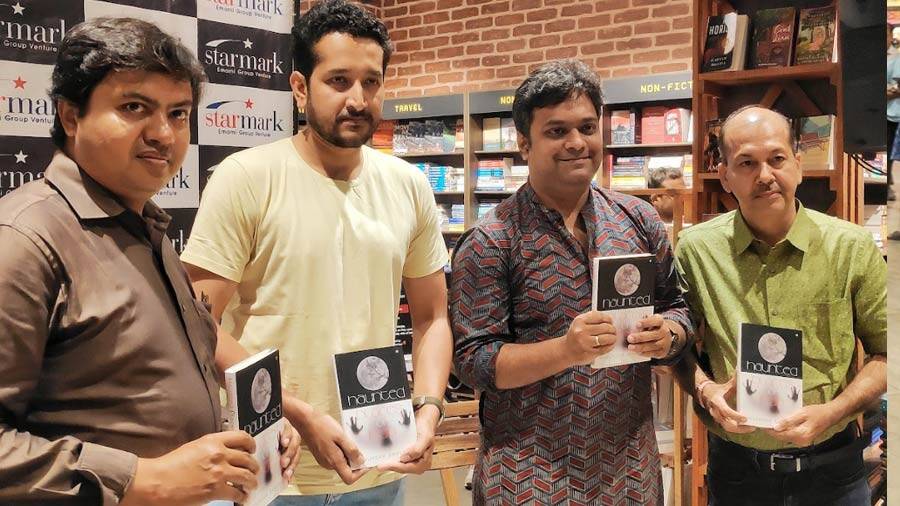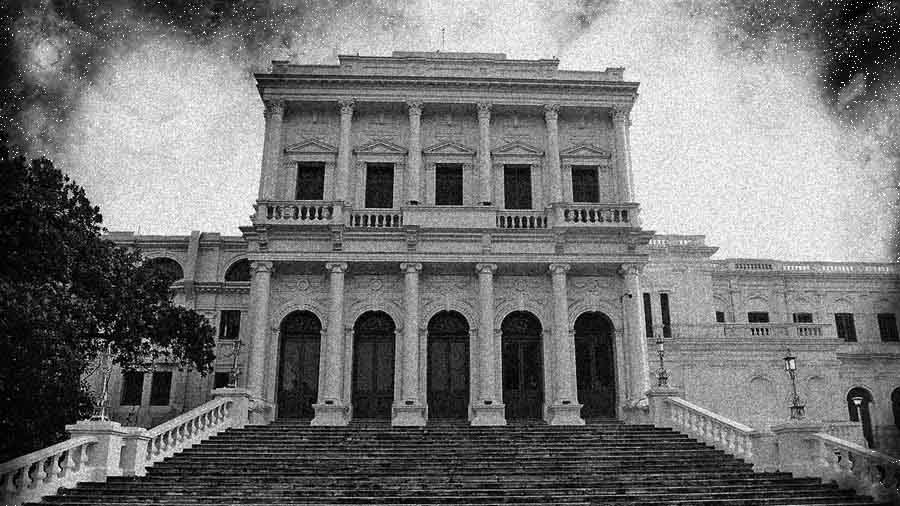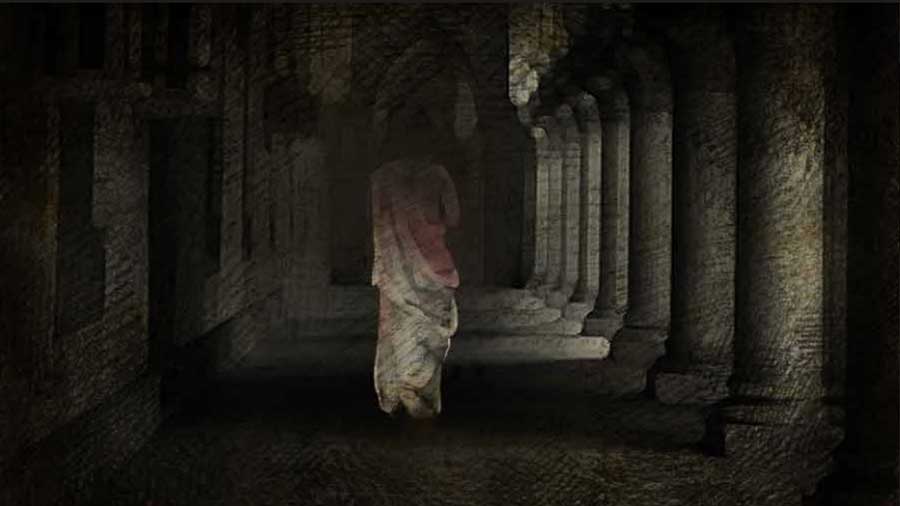A researcher and an academic intrigued by ghosts and their histories, Riksundar Banerjee is often mistaken for a believer in spirits or even an exorcist. But Banerjee believes ghosts are nothing but an encounter with the self and his latest book, Haunted Places of India, is not about spine-chilling horror stories, but an exploration of the socio-cultural and psychological aspects of an abstract thing we call ghosts.
The supernatural is an integral part of different cultural traditions in India. Learning about ghosts has evolved from a communal experience to a personal one — from listening to ghost stories from our grandparents, we have transitioned to reading horror fiction or watching horror films alone. The eerie elements conjured by ghost stories continue to enjoy great prominence among readers. Following the launch of Banerjee’s book, published by Aleph Book Company, at Starmark, South City Mall, Kolkata, on June 14, the author engaged in a conversation on the philosophical, socio-cultural and sensory dimensions of ghosts and a lot more with actor and filmmaker Parambrata Chattopadhyay, writer Caesar Bagchi, and moderator Saikat Banerjee.
‘We love to be both afraid and avoid encountering fear’
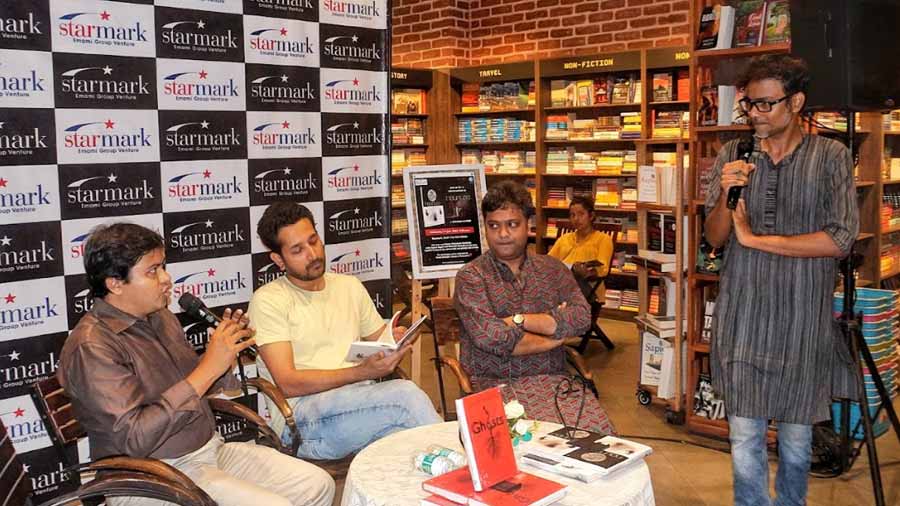
‘Ghosts are invariably rooted in socio-cultural contexts and locales,’ said Caesar Bagchi (left)
The moderator initiated the dialogue by commenting on our conscious avoidance of fear and everything that can cause us harm and our simultaneous fascination with horror fiction. He added, “The fear of non-existence is a primary one that we are all plagued by at some point. This fear can be understood in different ways. We are all trapped in the cycle of life and death, but if the whole world were to be destroyed together, our fear of not being will be a little lesser. But what happens when we cease to be and experience all our worldly connections and possessions? This fear makes us feel vulnerable. We also feel this fear another way — what if I am the only being alive? Where lies the boundary between what exists now and what does not?”
Bagchi elaborated on the human obsession with experiencing fear that draws them towards ghost stories, however limited the tropes might be. “I do not consider the tales in Riksundar’s book as mere ghost stories because these are sociological studies of the cultures as well,” said Bagchi, “In the villages of Bengal, mecho petni is a popular type of ghost. If we look at how they came into existence, we can understand that young widows who craved fish became this type of ghost after death. Ghosts are invariably rooted in socio-cultural contexts and locales.”
Ghosts as a manifestation of the human psyche
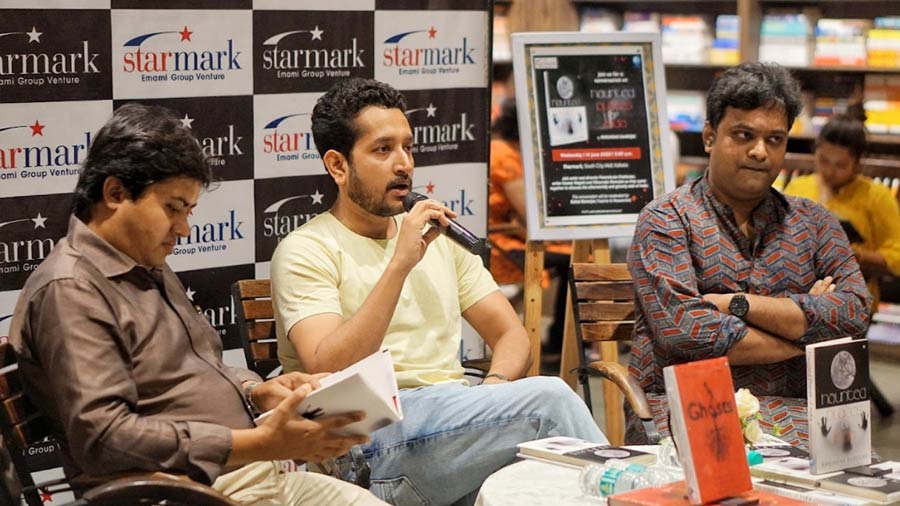
Parambrata Chattopadhyay announced that another of Riksundar Banerjee’s books — ‘The Book of Indian Ghosts’ — will be made into an OTT series or film
The word bhoot in Bengali refers to both ghosts and the past. “Since the time of creation, humans have been curious about the afterlife, and this births our interest in ghosts. When our bodily existence comes to an end, what happens to the abstract entity called the soul? Writers have responded to this question in various ways. While the ghosts of Shirshendu Mukhopadhyay are more like humorous and friendly pranksters, the writer Swapan Kumar created ghosts that unsettled me. These ghosts were vengeful and had many unfinished businesses on this planet. We must remember the emotional dimension that creates ghosts,” said Chattopadhyay. Ghosts often tend to realise many unfulfilled desires — be that for a person, a space, a thing, or even success — making wish-fulfilment a reiterated trope in ghost stories.
Indebted to Mike Flanagan’s TV series The Haunting of Hill House for getting him hooked on the supernatural, Chattopadhyay remembered picking up Banerjee’s The Book of Indian Ghosts at the Kolkata airport — “Sleepy and annoyed before just another flight, the bright red cover of Riksundar’s book at the W H Smith store grabbed my attention. I was delighted to chance upon this book by another fellow Bengali. The long list of ghosts and their stories piqued my interest. On my two-hour flight to Mumbai, I finished almost the entire book. It opened the windows of my mind. In a country of diverse religions and cultures like ours, there is no end to rituals, traditions and superstitions — these create ghosts that seep into popular discourses. These stories left me thinking about how these are manifestations of both the human psyche and various cultural practices. The Book of Indian Ghosts came across as an important social document to me. My friend and I signed an agreement with a company in Mumbai to create an OTT series or film out of the treasure trove of 84 ghost stories that Riksundar has extensively researched and culled from different parts of the country. As we are probing and rewriting these stories to suit the audio-visual format, we are learning how these are not just tales about the uncanny — they hold mirrors to the respective societies. Horror will definitely be an element in what we offer you, but the bigger artistic goal would be to show these ghosts as distinctive cultural expressions.”
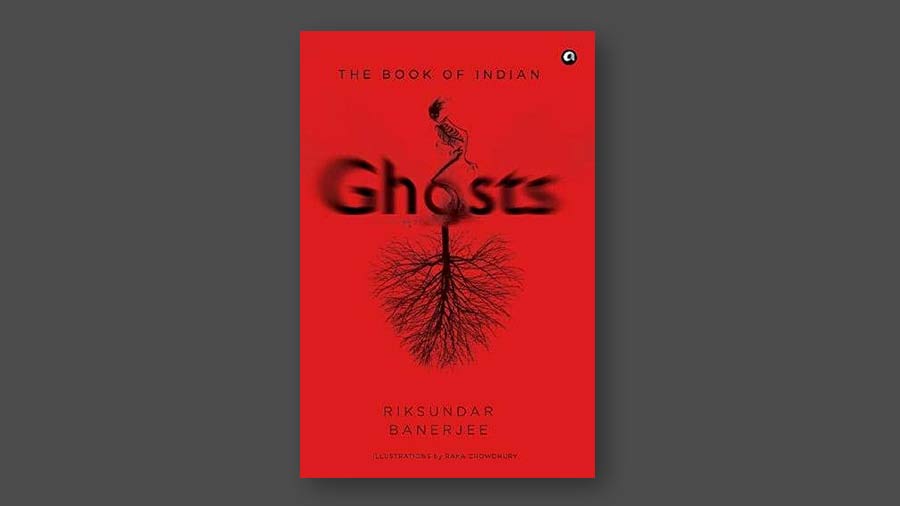
Riksundar Banerjee’s ‘The Book of Indian Ghosts’
Embracing the Oriental understanding of the supernatural
There lies a fundamental difference between the Western and Oriental conceptions of ghosts. Post-lapsarian narratives have established a well-demarcated binary of good and evil, but this is a grey area in Indian horror stories. Chattopadhyay explained, “Tantrism takes us into this grey area. Hindus worship Goddess Kali. When enraged, this same Divine Mother can unleash dakini, yogini, pishach (the demons accompanying Goddess Kali) on us. Should we then call the goddess good or evil? Tantrism is a liminal space and merits in-depth discussions. It does not matter whether you believe in it. This blurring of boundaries between good and evil adds a new dimension to the horror literature produced in India. If we consider the concept of jinn in Islamic traditions, we can understand that the idea of parallel dimensions that the West is preoccupied with in recent times can be traced back to these ancient Oriental traditions.”
Curating content for ‘Haunted Places of India’
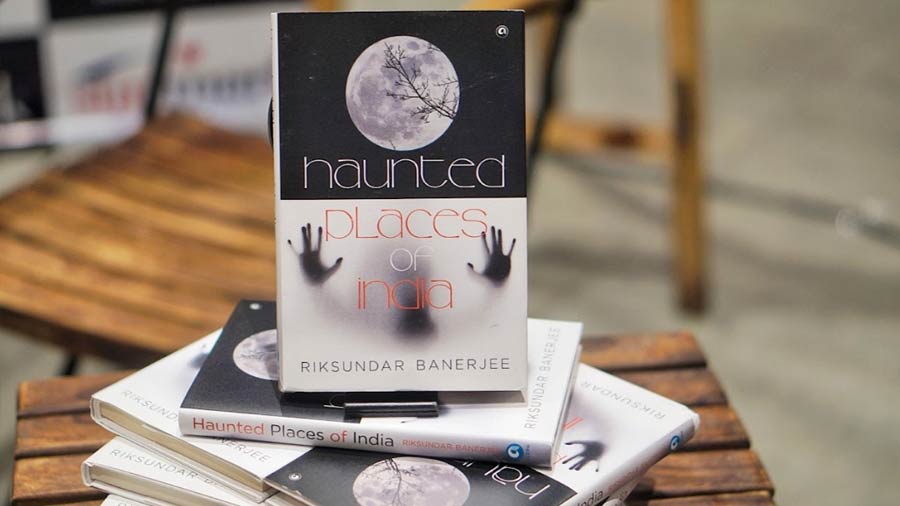
Copies of ‘Haunted Places of India’ at Starmark, South City
Alongside having the paraphernalia of a good horror story, Haunted Places of India is a study on the growing consciousness of the body, subjective responses to the supernatural, the role of class in creating haunted spaces, and a lot more. “The stories in my book are about people from different classes — while one talks about a haunted flat in a posh apartment, another is about the workers in Lambi Dehar mines near Mussoorie, who inhaled poisonous gases, coughed out blood, died extremely painful deaths and are believed to haunt the region. My choice of content is also eclectic — from an abandoned village called Kuldhara to a small ghostly hostel room. Some of my stories have drawn on century-old myths and some are tales rooted in our modern urban existence,” said Banerjee. Interestingly, this book can be treated as a travelogue because it is a list of many exotic and fascinating destinations in the country that have become, unfortunately, or otherwise, associated with spooky tales. Speaking about the fictionalised aspect of the stories he collated from and about the 40 places in the book, Banerjee mentioned that he took artistic license in certain cases because no one knows exactly what had happened in some of these haunted spaces.
The horror of urban existence
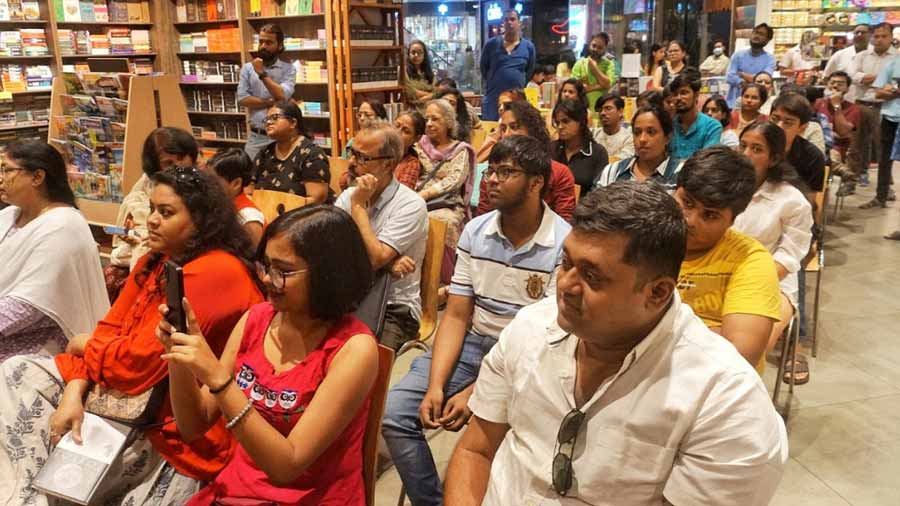
The thought that our modern lives are more frightful than age-old ghost stories echoed among the audience
We are conditioned into believing that ghosts dwell in darkness. If this were the case, can they exist in the illuminated urban spaces? Bagchi believes ghost stories are evolving and have mingled with technological advancements — “You can be watching something on your mobile or TV screen from where a ghost can appear.” Taking off from this, Chattopadhyay added, “Ghosts are about negative thoughts, pent-up anger. The civilisation’s onward march is only adding to these. Many spaces sicken me without any visible abnormality. I will share an anecdote with you. Close to the Bijan Setu is an abandoned house, and I grew up hearing it is a haunted place. Today, I will be more terrified if someone leaves me alone in a newly-constructed 33-floor building than in that allegedly haunted house. This is because this newly built space has no past. I do not know the suffering many must have endured to build it. Ghosts can no longer be associated with darkness solely. Many electric lights in this new house cannot alleviate my fear of encountering the uncanny. The old house, on the other hand, has a history, however dark it might be.” Commenting on the evolution of tropes in horror films, he also discussed the genre of political and psychological horror that is often more menacing than conventional ghost stories. He believes it is the horror of urban existence that has begun to suffocate us lately.
‘Ghosts do not exist in this world’

Riksundar Banerjee’s preoccupation with ghosts often misleads people into believing he is an exorcist
As a researcher and academician intrigued by ghosts and their histories, Banerjee is often mistaken for a believer in spirits. He said, “It is funny how many people take me for an exorcist owing to my preoccupation with ghosts. I will reiterate that ghosts do not exist in this world. What we understand as ghosts is a feeling of ghostliness that we confer on a space. The creepy feeling of being watched over or accompanied by someone stems from our consciousness of our body and senses. These are instinctual and sensory experiences that cannot stand the test of science. Our bodily presence is validated by others, and our fear of death is an expression of our intense love for the self. Our rationality enforces subjectivity. We can have starkly contrasting ideas about ghosts. If we can record different people’s experiences of confronting ghosts, the responses will come like a stream of consciousness — every experience is unique. Working in a CCTV-monitored area, having our calls tapped and all online searches tracked, or even AI threatening to overtake us — these experiences are not different from feeling someone breathing down our necks or peeking from behind. Ghosts are nothing but an encounter with the self. Today’s conversation on and around Haunted Places of India was not about spine-chilling horror stories — it was about exploring the socio-cultural and psychological aspects of an abstract thing we call ghosts.”
